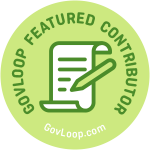As technology continues to modernize, organizations across sectors have leveraged new digital tools to improve interactions with the people they serve. By integrating these tools into everyday interactions on multiple platforms, government has reached unparalleled levels of engagement, allowing public sector organizations to drive program success to achieve their goals.

So where does your organization stand? Are you just starting out with digital communications, moving paper bulletins to emails? Or have you been running paperless and automated end-to-end agenda management for years?
Regardless of where you fall on the digital landscape, it has never been a better time to adopt digital solutions so you can accomplish even more. However, achieving modernization is much more effective with a plan. The following three principles are a good launching point for developing a digital modernization strategy so your agency can continue embracing innovations.
Put citizens first. Today’s citizens are accustomed to easy seamless and innovative digital experiences. Whether it’s calling a car through an app or ordering their morning latte online before they even leave the house, people expect government to match the service level of the private sector.
As a result, government has to take a “citizen-centered” approach to creating, managing, and presenting programs and information on the agency’s websites, mobile apps, and digital communications. By putting the people you serve first and building a strategy for what they want to see, you will significantly strengthen relationships and engagement with them.
Fully appreciate the ROI. Technology is expensive. However, as manual processes take up more and more manpower and resources, it is increasingly becoming more cost effective to invest in technology. Ultimately, organizations that use digital tools for communication and program management find them more cost effective and efficient.
For example, it’s easier to change emails and digital ads than printed billboards or fliers and accessing digital agenda packets is much less cumbersome than printing them for each council member and attendee. As technology platforms continue to move to the cloud, public sector organizations have unprecedented access to digital tools that would have previously been hindered by budget constraints. If you’ve only been lead to believe that your agency doesn’t have the money, it may be time to start exploring the cost effective digital tools available to you today.
Modernization equals transparency. As organizations adopt digital tools, it becomes easier for governments to relay important information to diverse audiences across multiple channels. For a modern digital government, this means engaging more deeply with audiences and at the same time, build a greater sense of government transparency, connectedness, innovation and satisfaction.
So, are you ready to get started? For the next twelve weeks, this series will unpack what it means to be a modern digital government, actionable steps on how to achieve it and success stories from agencies that have come before you. If you have a cool example of modernization at your agency, share it in the comments so we can see and discuss the innovative stuff you are working on!
Courtney Belme is part of the GovLoop Featured Contributor program, where we feature articles by government voices from all across the country (and world!). To see more Featured Contributor posts, click here.





Thanks for sharing these insights, Courtney! Putting the citizen first seems like a no-brainer, but I’ve seen various instances where that is not the case. Instead, budgets, requirements and preferences of internal users take the place of what citizens want and need. This is a great reminder.